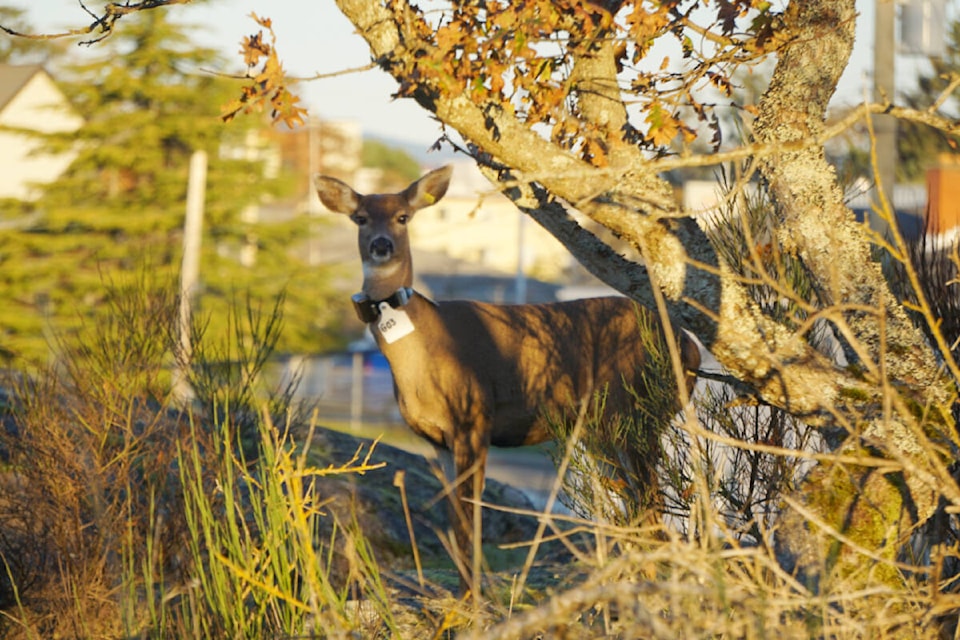With spring fawning season here, researchers working with the Township of Esquimalt on its deer management plan are looking forward to seeing the results of their fall immunocontraception efforts.
The first year of immunocontraception 41 does received IC. An additional 20 were marked as control does – these will not receive IC, allowing researchers to see if there’s a marked difference between fawning rates between those that have gotten IC and those that have not, says UVic PhD candidate Alina Fisher, a member of the research team working on the Esquimalt project and with the Urban Wildlife Stewardship Society in Oak Bay, on that community’s deer management plan.
Additionally, 41 motion-activated cameras are mounted in Esquimalt, including on DND land, the Gorge View Golf Course, in local parks and by permission on residential properties.
“We should be able to generate a population estimate of the pre-IC population size soon, and we should start getting data on our cameras of does with fawns now. So in a few months we should be able to get an idea of how much fawning rates have changed with the application of IC,” Fisher says.
“We’re hopeful that the results will show similar success as what we’ve seen in Oak Bay, but a few things could affect the impact on the larger population,” she adds.
First, Esquimalt’s population of Columbian black tailed deer is significantly more isolated than those in Oak Bay, because the community is bounded on all sides by water, with only a narrow connection of land from View Royal.
In addition, IC was administered to 60 adult females in Oak Bay, compared to 41 in Esquimalt – which was as many as could be captured. And because the data on Esquimalt’s population estimates is still being tabulated, they’ll have to wait to see the proportion of the population that received IC compared to the overall population. “We’re really looking forward to seeing what the data will show us over the coming months,” Fisher says.
The Oak Bay results have been promising, with a 60 per cent reduction in the number of fawns following the first year of inoculation. Last month, wildlife veterinarian Dr. Adam Hering presented Dr. Jason Fisher’s work in Oak Bay at an international conference on Wildlife Fertility Control in Colorado, highlighting data around habitat use and the fawning rate reduction.
Spring fawn alert
While Esquimalt residents will likely see fewer fawns this year, it’s still fawning season, and that means it’s time to be alert to deer’s unique behaviour.
- If you see a fawn, leave it alone – momma is likely nearby and will return when you leave. DO NOT touch the fawn. If it appears cold, weak, thin, injured, bleats repetitively, or if the mother has not returned to a seemingly healthy fawn for more than eight hours, call WildARC.
READ MORE: Be Deer Aware: Simple steps to keep our furry friends safe
To learn more about Esquimalt’s deer management plan, click here. Residents can also pick up “Caution, Deer ” signs at Esquimalt Municipal Hall.
